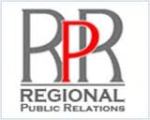In an example which illustrates what Boorstin meant :
“The owners of a hotel, in an illustration offered by Edward L. Bernays in his pioneer Crystallizing Public Opinion[1923], consult a public relations counsel. They ask how to increase their hotel’s prestige and so improve their business.
“In less sophisticated times, the answer might have been to hire a new chef, to improve the plumbing, to paint the rooms, or to install a new crystal chandelier in the lobby.
“The public relations counsel’s technique is more indirect. He proposes that the management stage a celebration of the hotel’s thirtieth anniversary. A committee is formed, including a prominent banker, a leading society matron, a well-known lawyer, an influential preacher, and aneventis planned [say a banquet] to call attention to the distinguished service the hotel has been rendering the community. The celebration is held, photographs are taken, the occasion is widely reported, and the object is accomplished.”
To this Boorstin explains as he thinks it is a pseudo event. He says,
“Now this occasion is a pseudo-event, and will illustrate all the essential features of pseudo-events.
“This celebration, we can see at the outset, is somewhat — but not entirely — misleading. Presumably the public relations counsel would not have been able to form his committee of prominent citizens if the hotel had not actually been rendering service to the community. On the other hand, if the hotel’s services had been all that important, instigation by public relations counsel might not have been necessary.
“Once the celebration has been held, the celebration itself becomes evidence that the hotel really is a distinguished institution. The occasion actually gives the hotel the prestige to which it is pretending.
“It is obvious, too, that the value of such a celebration to the owners depends on its being photographed and reported in newspapers, magazines, newsreels, on radio, and over television. It is the report that gives the event its force in the minds of potential customers.”
source: http://www.nku.edu/~turney/prclass/readings/events.html
Press conferences are a common example of pseudo-events.Pseudo-events are staged to attract media attention.The media is informed well in time so they can prepare for reporting on it. “Spontaneous (or “genuine”) events are never, or hardly ever, influenced by the mass media.” It is important to note here that though such events may not be influenced by media they could have news value and be vital for the media to report .
source:http://www.blackwellreference.com/public/tocnode?id=g9781405131995_chunk_g978140513199518_ss36-1
Are we so media dependent that pseudo events seem to be the only way to get attention? what about non-media activities? Can these be added a little more as part of strategic communication, both by corporations and NGOs alike, so that public relations is looked at a little differently? what do you think?


